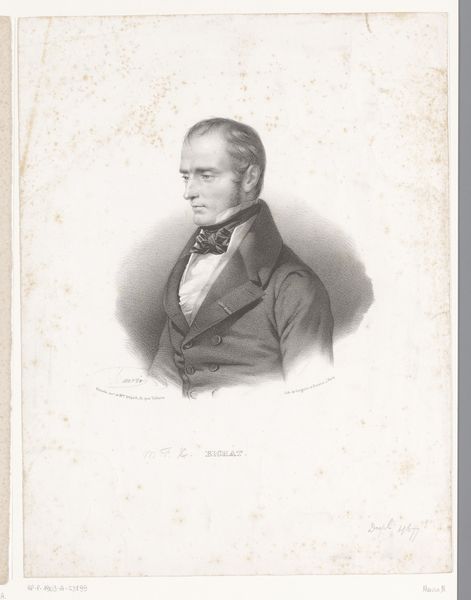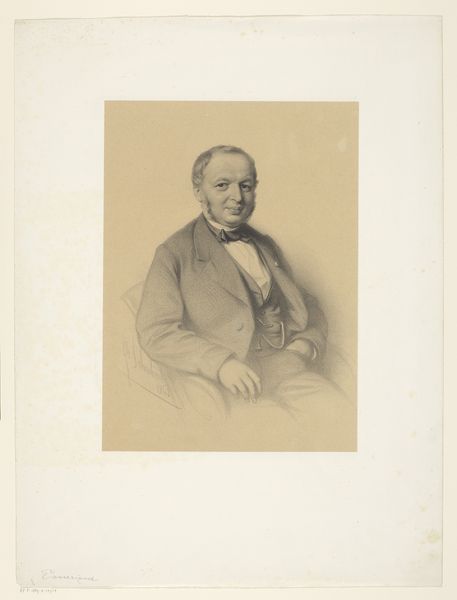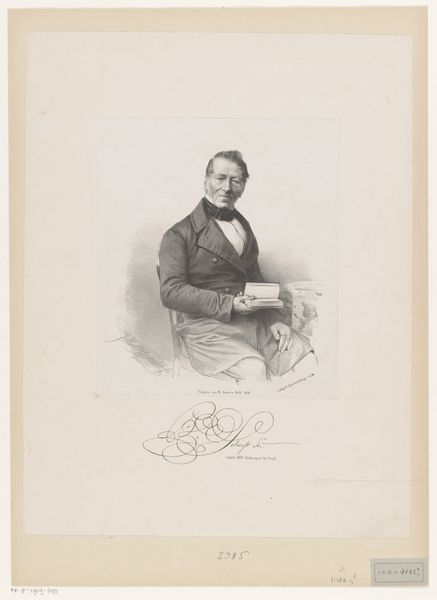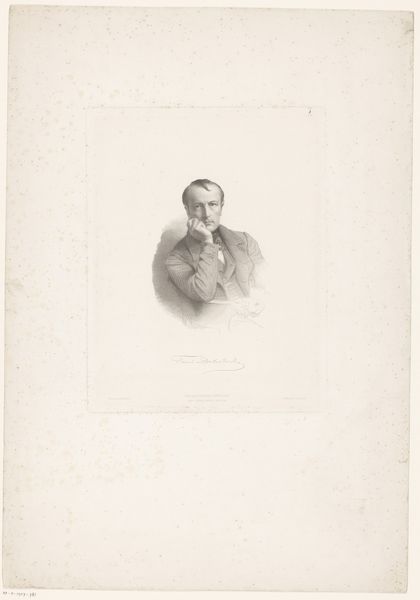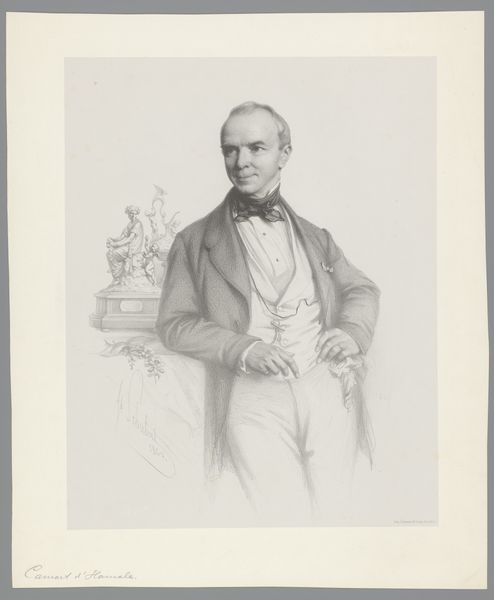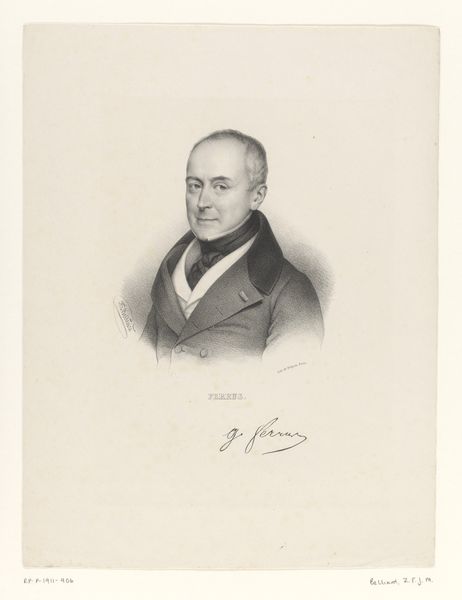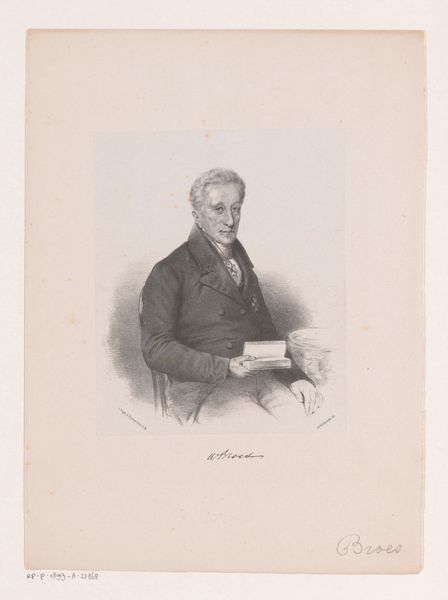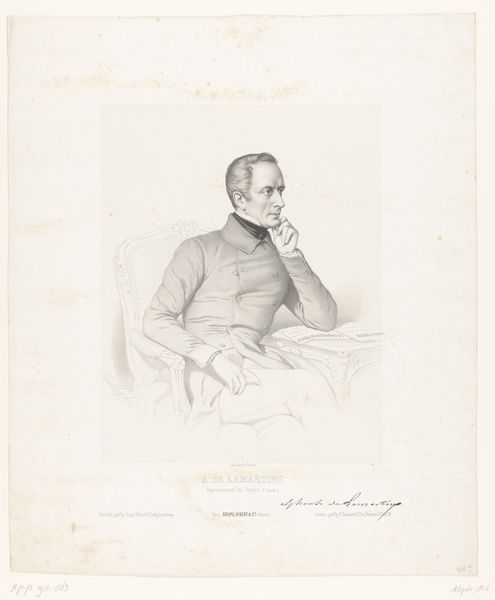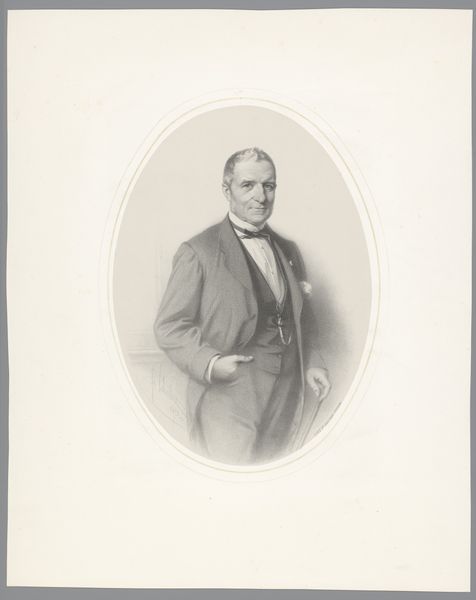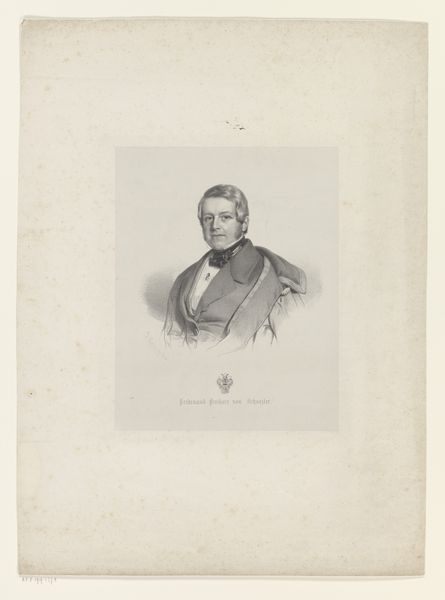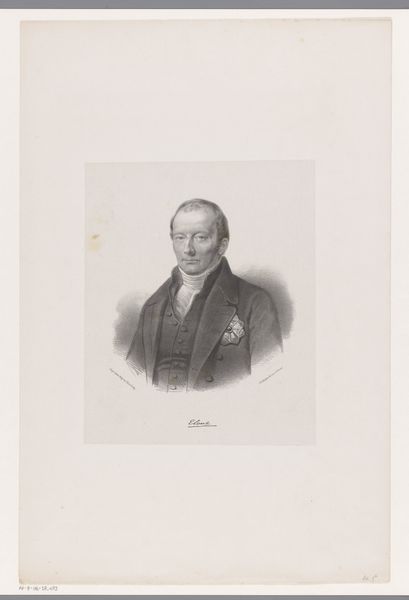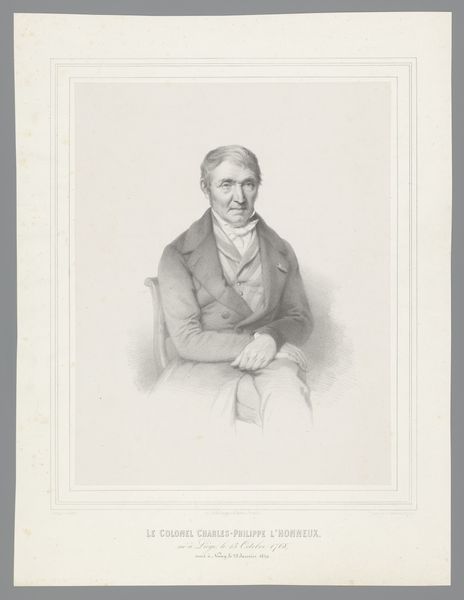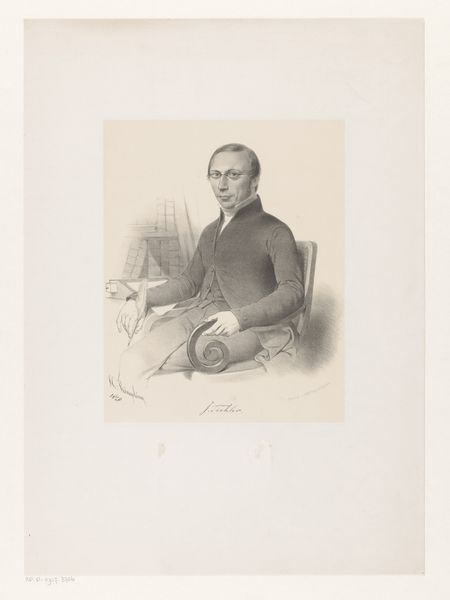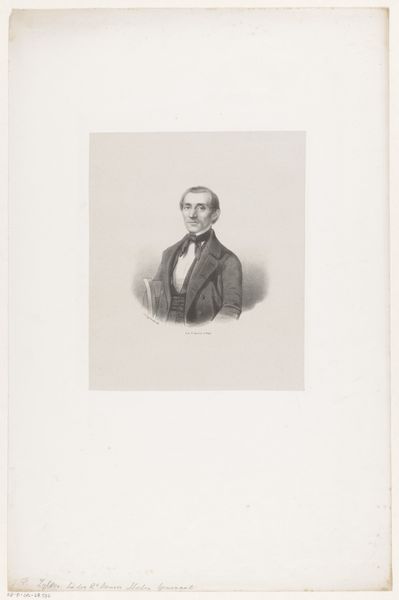
drawing, pencil
#
portrait
#
pencil drawn
#
drawing
#
pencil sketch
#
pencil drawing
#
pencil
#
portrait drawing
#
academic-art
#
realism
Dimensions: height 544 mm, width 400 mm
Copyright: Rijks Museum: Open Domain
Joseph Schubert made this portrait of Mijnheer Mélot, using lithography. Lithography, a relatively new technology in the 19th century, democratized image production. Consider its role in shaping public perception, particularly within the context of burgeoning print culture. The portrait presents us with an intriguing set of visual codes. The sitter’s composed demeanor, arms crossed, signals a degree of self-assurance, fitting within the conventions of bourgeois portraiture. The work’s creation in the Netherlands raises questions about the social and economic structures of the time. Was it a commission? What role did institutions like art academies or patronage play in Schubert's career? Further exploration into the political and economic circumstances of 19th-century Netherlands, combined with research into the lives of both the artist and sitter, might reveal deeper meanings embedded within this portrait. Art becomes a mirror reflecting the complexities of its time, contingent on its social and institutional context.
Comments
No comments
Be the first to comment and join the conversation on the ultimate creative platform.
